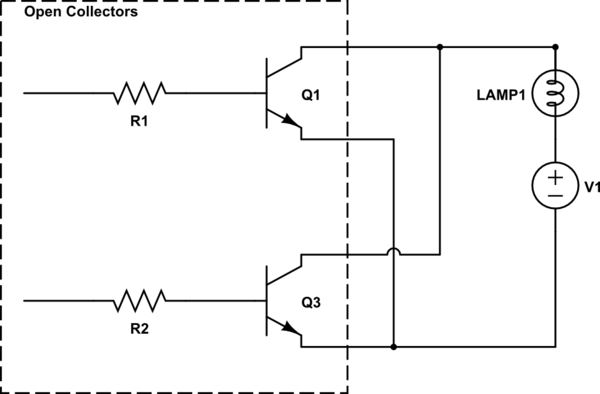May I connect two open collectors like this in parallel?

simulate this circuit – Schematic created using CircuitLab
May I connect two open collectors like this in parallel?

simulate this circuit – Schematic created using CircuitLab
Yes, this is exactly the intended purpose. It's called a wired-OR or wired-AND, depending on your logic. (Or, as Tony points out, even a wired-NOR!)
However - you should not do this if you just want twice the amount of current sinking capacity. Only if you want the feature of being able to switch using separate inputs. Current will likely not be shared equally between the devices.